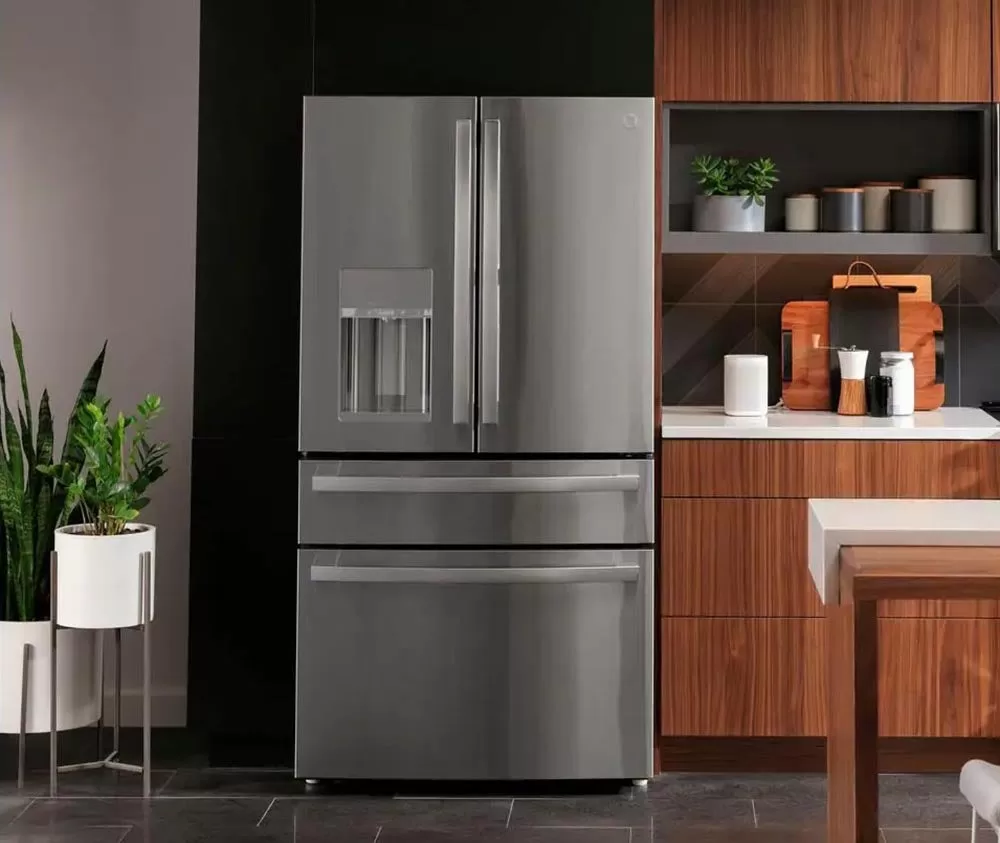Fixing Cooling Issues in GE Fridges
**NOTICE**:
For technical reference, this tip is specifically for repairing electronic equipment. It’s important to consider the potential risks and complexities involved. We suggest checking the manufacturer’s accuracy, reliability, and safety recommendations. Please note that Encompass cannot guarantee the validity of this information.
Finding a quick solution is crucial if your GE refrigerator is not cooling food properly. Discover this easy and effective tech tip for diagnosing and resolving temperature issues. Keep your refrigerator operating optimally, ensuring freshness and deliciousness for longer. Learn the step-by-step instructions and troubleshooting advice to restore the perfect temperature swiftly.
GE Appliances is renowned for producing highly reliable and durable refrigerators that stand the test of time. With proper care and maintenance, many of their models can last up to two decades, showcasing their exceptional craftsmanship. However, even the most dependable appliances may experience cooling-related issues, a common concern for homeowners with GE refrigerators. Trust in the longevity and quality of GE refrigerators for unmatched performance and peace of mind.
Refrigerator cooling issues can be a significant concern, affecting the freshness of your food and posing health risks. Inadequate cooling can result in premature spoilage and bacterial growth. Additionally, these issues can lead to higher energy consumption and increased electricity bills. Ensure optimal performance with proper maintenance to keep your food fresh and reduce energy costs.
While the function of the refrigerator is pretty simplistic, it relies on several parts to consistently maintain the correct temperature. Several signs that a GE fridge isn’t working properly include:
- Excessive condensation
- Motor runs hot
- The fridge making loud sounds
- Food spoils much quicker than it should
- Food is at room temperature to touch
Top Causes Of Refrigerator Cooling Problems
POWER SUPPLY
Identifying a lack of power is the most readily apparent fault, yet surprisingly easy to disregard unless one has a habit of nocturnal refrigerator visits. The easiest way to tell whether the refrigerator is receiving power is to open the door – if the light turns on, the power is good.
If there is no power, there are a few potential solutions. To troubleshoot the issue, consider connecting the unit to an alternative socket or utilizing a multimeter to confirm the current flow. Alternatively, you might need to replace the plug fuse or even consider replacing the plug entirely.
THERMOSTAT DIALS
If you accidentally knock the refrigerator thermostat dial, you might have altered the initial temperature setting of 35°F to 37°F. Not to worry, modern GE models have great deals waiting for you inside the fridge compartment. You’ll find a dual temperature dial for fridge-freezer units: the left controls the freezer, while the right controls the refrigerator. Adjust the dial on a scale from 1 (warmest) to 9 (most excellent), or turn to 0 to stop the cooling process. Enjoy improved writing, structure, and readability while maintaining the original meaning. Remember, after installation, the cooling unit takes approximately 24 hours to reach the new temperature setting.
FAULTY TEMP SENSOR
If the refrigerator’s computer fails to receive accurate data, adjusting the thermostat to your desired level will not yield substantial outcomes. The thermistor, also called the temperature sensor, detects the temperature and transmits the essential information to the control board. It’s crucial for ensuring optimal performance and maintaining the desired temperature inside the fridge.
If the temperature doesn’t seem to cool even after adjusting the dial, replacing the thermistor (part WR55X10025) may be necessary to resolve the problem. Before fitting the new part, it’s crucial to disconnect the power supply from the unit to ensure safety.
FAN FAULTS
The condenser fan is another critical component for managing temperature. It sucks air through the front grille before circulating through condenser coils and over the compressor. One of the most straightforward troubleshooting steps is to defrost the fridge compartment. This will free up blades that were immobilized by ice. If this does not work, purchasing a new fan motor may be necessary. The fan is located toward the floor at the back of the unit.
SEALS & LEVEL
Maintaining energy efficiency and temperature control in your refrigerator is crucial. The magnetic door seals, also known as door gaskets, are vital in preventing cold air from escaping. However, these seals can deteriorate over time due to constant use. It’s essential to regularly check and improve the quality of these seals to avoid inflated utility bills and costly repairs. Additionally, ensure that your fridge is leveled correctly on the floor and has adequate ventilation space. By following these steps, you can optimize the performance of your refrigerator and save on energy costs.
ADDITIONAL FAULTS
Other typical cooling issues encompass obstructed coils, insufficient coolant in cooling units, and frost accumulation on the evaporator coils. Problems with the start capacity and start relay can also contribute to malfunctions.
Problems with the main control board, such as signals, can cause a loss or reduction of cooling. Problems with freezer parts like the ice maker can sometimes impact fridge cooling.
When Troubleshooting Fails
When you encounter issues with your modern GE appliances, here’s a helpful tip: Look for the QR code and serial tag inside the fridge’s top corner. Scanning them will direct you to a troubleshooting page on GE’s website specifically catering to your model. Additionally, depending on the age of your product, it may still fall under warranty coverage. So, find the answers you need quickly and efficiently!
Having trouble with DIY repairs? Don’t worry; we’ve got your back! Reach out to Appliance Cowboys and let us lend a hand. Give us a call today!

